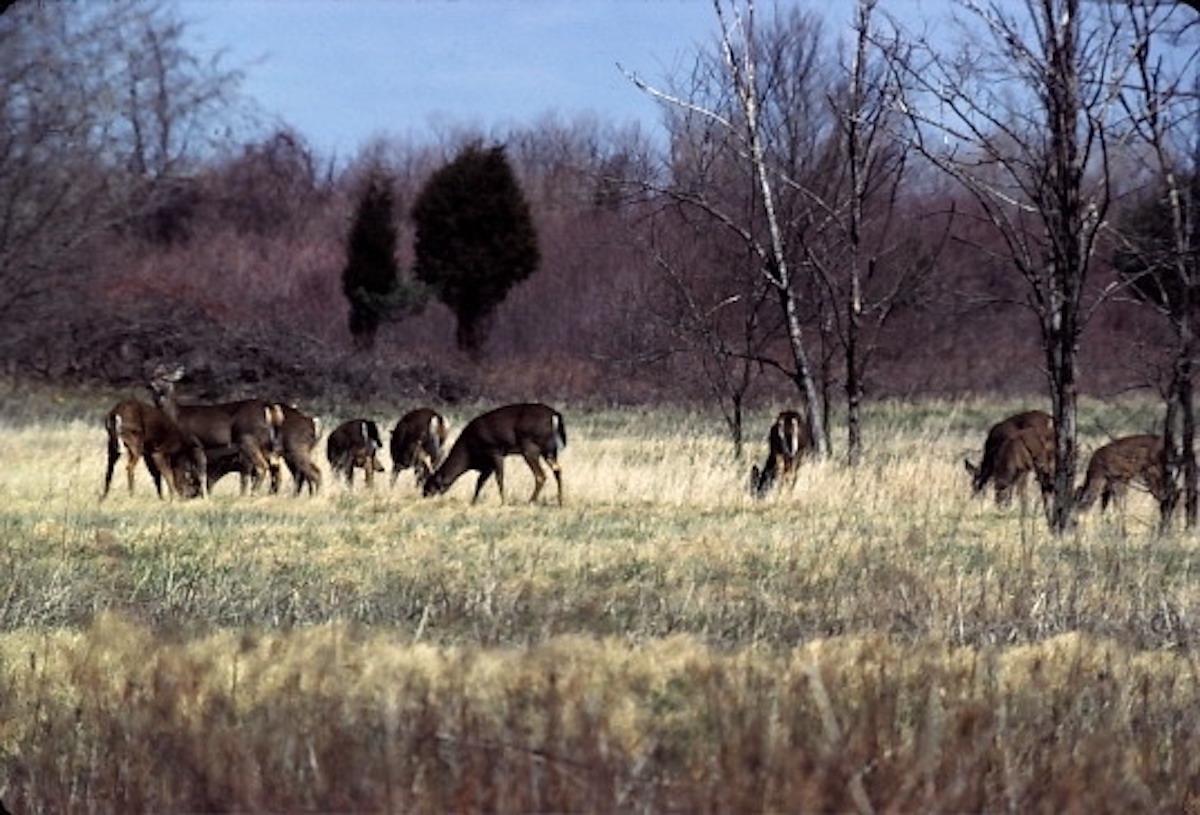
Point Pelee National Park has areas with heavy forest that attract white-tailed deer/Parks Canada
Point Pelee National Park is closed for two weeks for an annual white-tailed deer cull with Indigenous partners to control the hyperabundant species and protect the sensitive forest and savannah ecosystems of the most ecologically diverse park in Canada.
The park — the traditional home and territory of the Caldwell First Nation — can support 24 to 32 deer, but the latest aerial survey in December shows upwards of 92. The meat, hides, skulls and antlers of animals taken during this annual herd reduction will be used for personal, community and ceremonial purposes and provide access to traditional food sources.
“The deer reduction is part of a much larger forest restoration program for the park,” park superintendant Maria Papoulias said in a telephone interview. “Every year we manage to reduce by 30 to 40 per cent.”
Part of Parks Canada’s mandate is to maintain and restore ecological integrity in national parks. Point Pelee, the second smallest national park, is the southernmost tip of the Canadian mainland and is warmer than the rest of the country. It sits in an ecological region called the Carolinian zone (also known as the eastern deciduous forest) and boasts five ecosystems — a Lake Erie and sand spit savannah, marsh, swamp forest, dry forest and beach.
Most of the park’s 300,000 to 400,000 annual visitors don’t see deer because they hide in the interior forest and are most active at dawn and dusk. In winter, they gravitate to the dense forest cover of cedar trees and sumac stands.
Parks Canada considers a species “hyperabundant” when its population grows too large for the natural area to support it, and/or when it negatively affects species at risk. Point Pelee has a problem with cormorants on its Middle Island, and with deer on its mainland.
Climate change, landscape changes and a lack of predators are to blame for the rising deer count. With mild winters and less snow cover, it’s easier for deer to find food and survive. They easily adapted when early settlers converted forests to farms, and when they later abandoned the farms and young forests returned. Predators such as wolves, cougars and bears would normally keep deer in check here, but people wiped out their habitat and overhunted them.

White-tailed deer browse in Point Pelee National Park/Parks Canada
Now the deer — who are considered “selective foragers” because they avoid alien invasive species — are overbrowsing on native vegetation faster than it can regenerate. When a forest loses undergrowth, it loses critical places for small animals and birds to shelter and nest. When overbrowsing alters understory light conditions, the increased light levels allow alien invasive species to flourish while suppressing shade-loving native woodland species.
Point Pelee’s forest is home to a number of species at risk such as the Red mulberry tree, Eastern Wood-peewee and Eastern foxsnake. Deer are jeopardizing efforts to restore the Lake Erie sand spit savannah, a globally rare ecosystem that supports one quarter of the species at risk in the park.
Population reduction is “reserved for situations of absolute necessity,” says Parks Canada, and it has collaborated with Caldwell First Nation for more than a decade to actively manage Point Pelee’s deer.
Trapping and relocating have been investigated, but rejected because of high costs, low survival rates and a lack of available habitat. The cull happening this week will see park staff and members of the Caldwell First Nation set up in blinds, but a Covid-19 mitigation plan will be in force. “That’s the safest way to do the hunt. We may, in some years, have staff free roam,” said Papoulias. She expects they will harvest 30 to 50 deer. “Keeping in mind the objective is a population reduction, that take whatever deer comes.” This option mimics the predator-prey cycle, doesn’t directly impact other species, is cost-effective and is supported by stakeholders and Indigenous communities. The closure happens during a quiet time in January. Papoulias noted that winter hunting has a lower impact than usual because there are “less leaves, the ground is frozen and they’re not disturbing as much vegetation.” Caldwell shares its expertise and knowledge with its youth and Parks Canada.
“There will always be people out there that don’t agree with it,” said Papoulias. “We do our best to make them understand what we do and why we do it for conservation.”
The park closed January 7 and will reopen on January 22.
Perched on the north shore of Lake Erie, Point Pelee is best known for a monarch butterfly migration every September, but spring migratory birdwatching is a big draw. Reservations for one of 24 oTENTik sites (roofed accommodation) open January 12 for spring, and the park is pondering whether it can still safely host its Festival of Birds in May during Covid-19.
Point Pelee boasts more than 70 species of trees, 27 types of reptiles, 20 types of amphibians, 50 species of spiders and insects not found elsewhere in Canada. Some highlights are Acadian flycatchers, Carolina wrens, Blue-gray gnatcatchers, Red-bellied woodpeckers and Yellow-breasted chats.
Parks Canada works with Indigenous communities to conserve natural and cultural heritage and share stories. Last fall, Point Pelee’s day-use area Pioneer was renamed Madbin Jina with guidance from its First Nations Advisory Circle, which is made up of members of Caldwell and Walpole Island First Nations, both of which have traditional ties to the lands and waters within the park. The name invites people to come “sit a while” and invokes a traditional expression for welcoming guests in the Anishinaabe language, Anishinaabemowin.

 Support Essential Coverage of Essential Places
Support Essential Coverage of Essential Places






